You feel the vibrations as the rocket lifts off from the launch pad. This cramped spaceship is your home for two years as you journey all the way out to Jupiter, the Solar System’s largest planet.
It’s so far away that when you get there the Sun’s light is a mere 1/25th as bright as on Earth.
And yet, if you were to make a journey of the same distance in some planetary systems, you’d still be inside the star.

These celestial beasts – known as hypergiant stars – are colossal. The biggest can fit 10 billion Suns inside, or 14 quadrillion Earths.
Such monsters are rare, but they play a crucial role in seeding the Universe with the rich array of chemistry required to sustain life.
Their scarcity means they’ve been poorly understood in the past, but a run of recent research is giving astronomers unprecedented insights into their unique behaviour.
Soon we may know their secrets.
Hypergiants are so massive, typically dozens of times the mass of the Sun or more, that they are highly unstable.
They regularly cough huge quantities of their material back into space.
"They are throwing out the mass of Jupiter or more in a single event," says Roberta Humphreys, an astrophysicist at the University of Minnesota.
A similar event on a smaller scale unfolded on the supergiant star Betelgeuse in 2019, when it dimmed noticeably in the night sky before brightening again.
Painstaking analysis concluded that it spat out material weighing several times the mass of the Moon from its southern hemisphere.
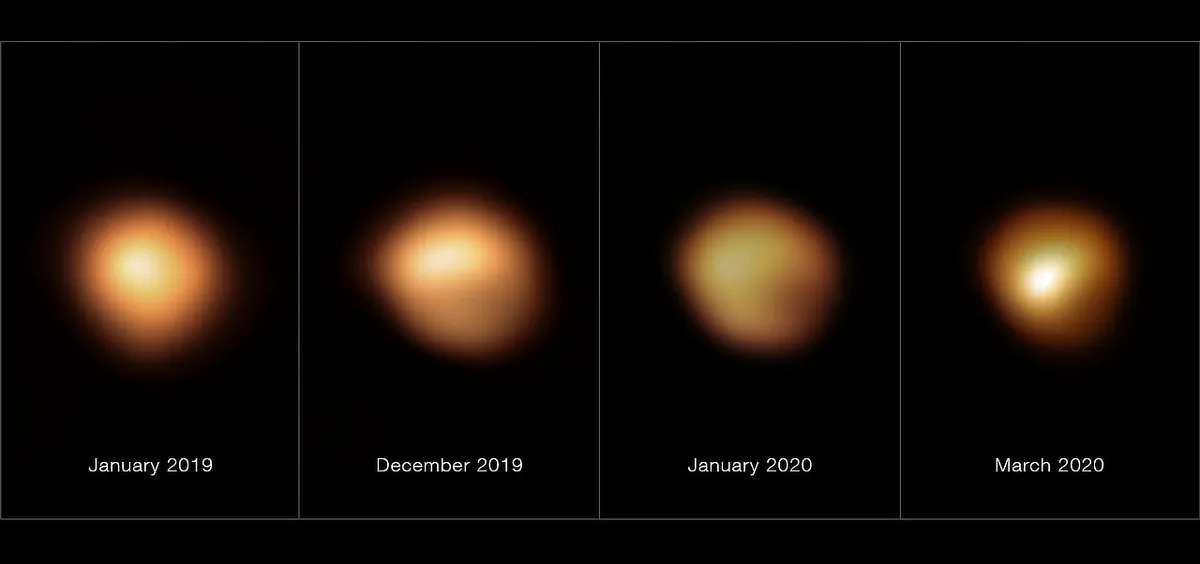
That material blocked out some of Betelgeuse’s light, causing the temporary dimming.
It was the first time astronomers had seen such a huge ejection from the surface of a star in real time.
Ejected material from hypergiants forms vast and intricate clouds that can stretch out to 10,000 times the Earth–Sun distance from the star’s surface.
That’s over 300 times further out than Neptune, the farthest planet from Earth in the Solar System, sits from the Sun.
"You can clearly see the ejected material forming arcs, lumps, knots and jets around the star," says Humphreys.
Individual knots can contain 3,000 Earths’ worth of material.
This ejected material enriches the interstellar medium with complex molecules.
When gas and dust from several stars mingles, it can collapse to form new solar systems.
Fledging planets there will already have the necessary chemical building blocks for biology.
In June 2022, Humphreys was part of a team that used the Atacama Large Millimeter Array (ALMA) in Chile to take a closer look at the ejected material surrounding a particularly famous hypergiant: VY Canis Majoris.
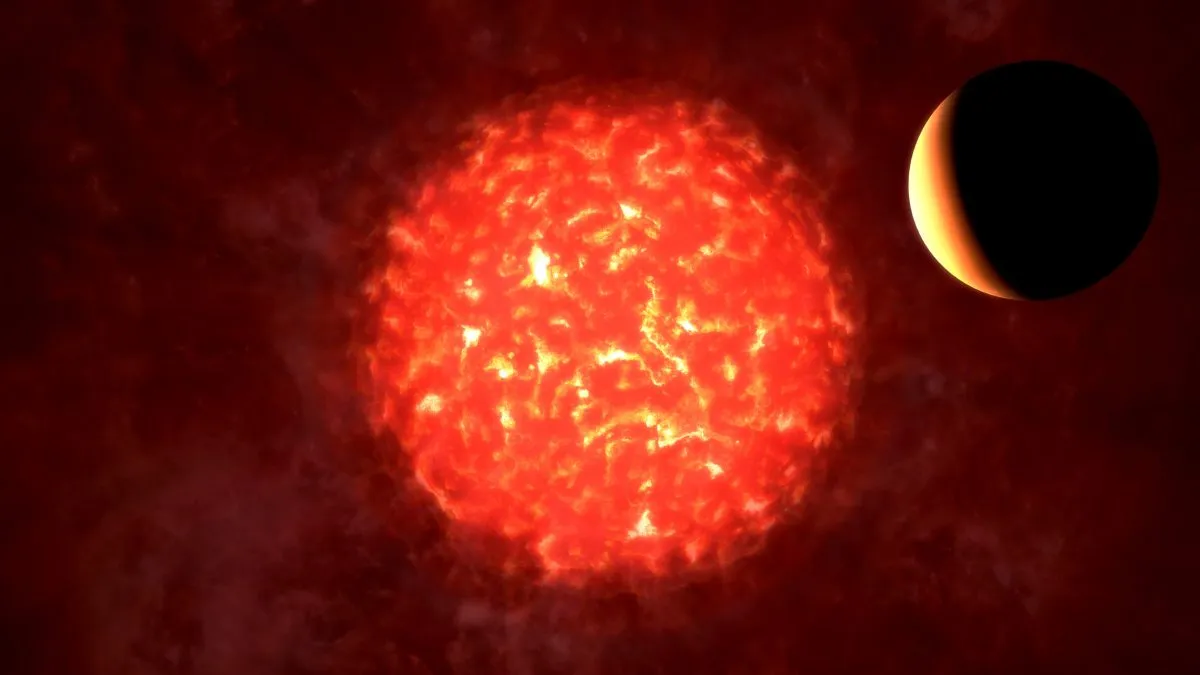
"Twenty-five different molecules have now been identified there," says Humphreys, including water and silicon dioxide, which is the major constituent of sand.
However, understanding why hypergiants like VY Canis Majoris lose so much mass has been an enduring mystery.
A mystery deepened by the rarity of these stellar goliaths.
Astronomers know of just 10 hypergiants in the Milky Way, meaning Sun-like stars outnumber them by more than a billion to one.
Even then our view of them is often obscured by the huge amounts of dust in our galactic disc.
Fortunately, astronomers have also identified a number of hypergiants in the Magellanic Clouds, two of the satellite galaxies that orbit around the Milky Way.
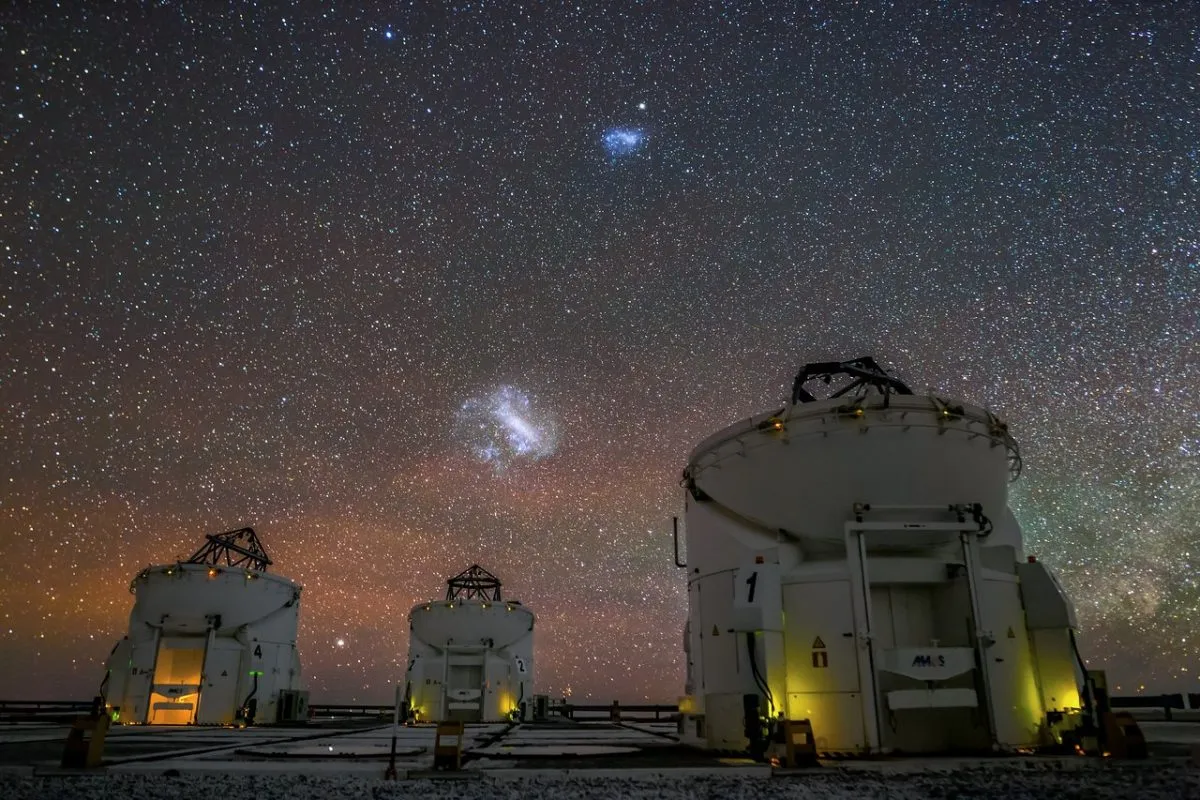
In 2022 a team led by Michalis Kourniotis from the Czech Academy of Sciences found three of them had something in common: they’re pulsating.
This could explain why hypergiants are often classified as variable stars. The star’s brightness changes in a repeating pattern as it throbs in and out.
Could these pulsations also be behind the ejected material from hypergiants?
Humphreys doesn’t think so. "Pulsations cannot get the material far enough above the star’s surface to the point where the dust and the molecules condense," she says.
It simply isn’t a powerful enough mechanism to spit material out to the vast distances that ejected material has been seen from hypergiants.
The cloud of ejected material from VY Canis Majoris, for example, is some 300 billion kilometres wide – that’s over 65 times Pluto’s distance from the Sun.
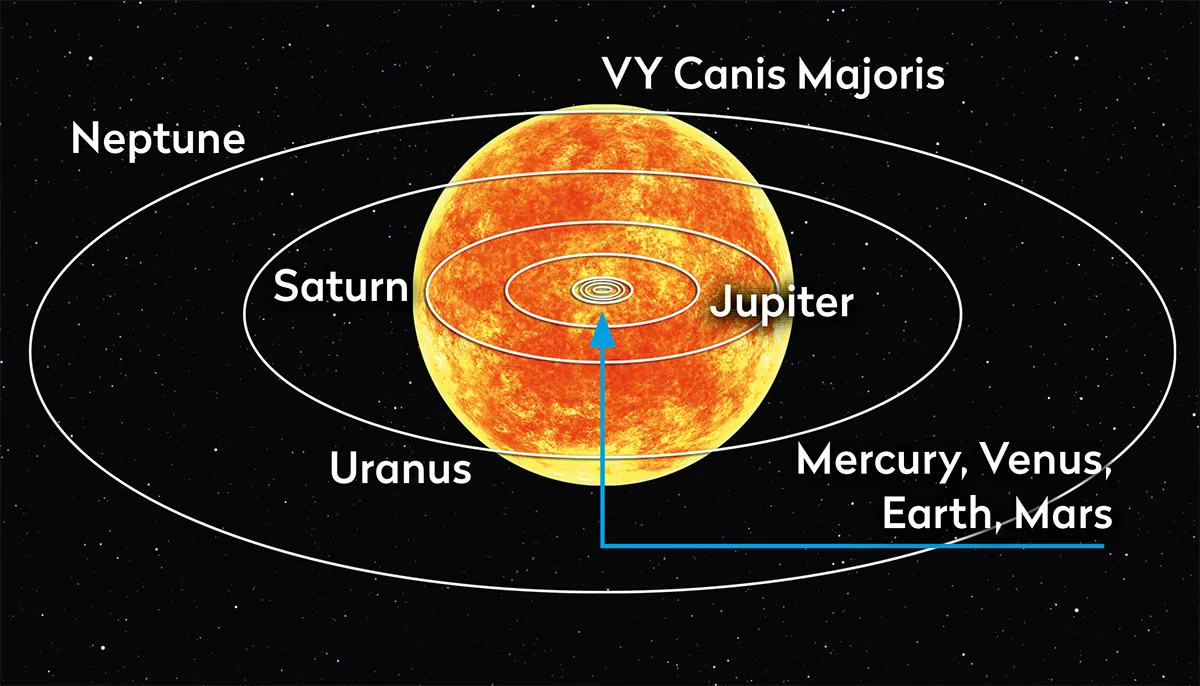
A possible clue comes from the fact that the lost material isn’t ejected symmetrically.
"It forms projectiles that are fired out in different directions and different angles from different regions of the star," Humphreys says.
That points to something going on in isolated regions at the surface, not something happening to the whole star at once.
Energy usually reaches the surface of a star through convection.
Hot material bubbles upwards, making the star’s surface seeth and roil, a bit like a pan of boiling water.
This creates convection cells at the star’s visible surface. The Sun’s convection cells are typically 1,000 kilometres across, but they can take up 60% of the surface of supergiants like Betelgeuse.
Perhaps these huge convection cells on the surfaces of hypergiants are destabilising and blasting material into space?
"[This idea] has the same problems as pulsations," says Humphreys.
Such an event would still not be powerful enough to eject material to the vast distances observed by astronomers.
"Something is missing – an additional mechanism is required," she says. The missing piece of the puzzle is magnetism.
We know from observations of our own Sun that it is highly magnetic.
Huge and powerful magnetic fields twist and contort until they snap, flinging huge quantities of material into the Solar System.
The most violent of these solar magnetic mood swings is a coronal mass ejection (CME), where the Sun spits out a billion tonnes of material at speeds of over a million kilometres per hour.
They are often associated with so-called active regions on the Sun and with other features such as sunspots.
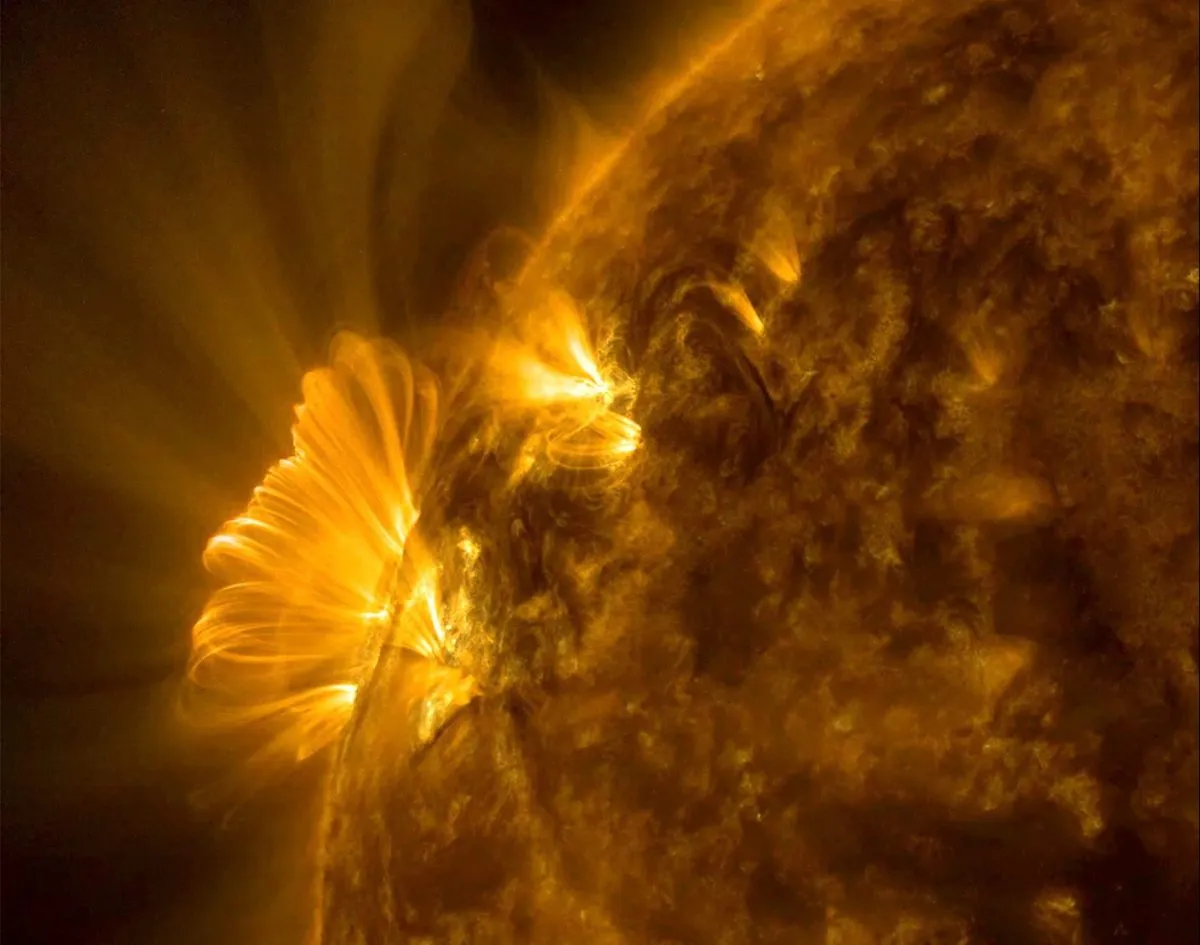
Except even they pale in comparison to similar events on hypergiants.
"The strength of the magnetic field is five times greater," Humphreys says. "The energy increases by a factor of a thousand."
She argues that, combined with convection, magnetic fields and coronal mass ejections could be the driving force behind the coughing fits of VY Canis Majoris and other hypergiants.
The coronal arcs produced would be a billion times larger than those seen on the Sun.
How they lose mass may be getting clearer, but another big mystery remains: how hypergiant stars die.
It’s a puzzle that dates back to 2015, when astronomers noticed the disappearance of
a hypergiant star called N6946-BH1 in the spiral galaxy NGC 6946, also known as the Fireworks Galaxy.
It was there in Hubble images from 2007, but had vanished from view eight years later.
Usually such a massive star would detonate as a cataclysmic supernova when it dies, which would be hard to miss. How could it have simply faded away without so much as a whimper?
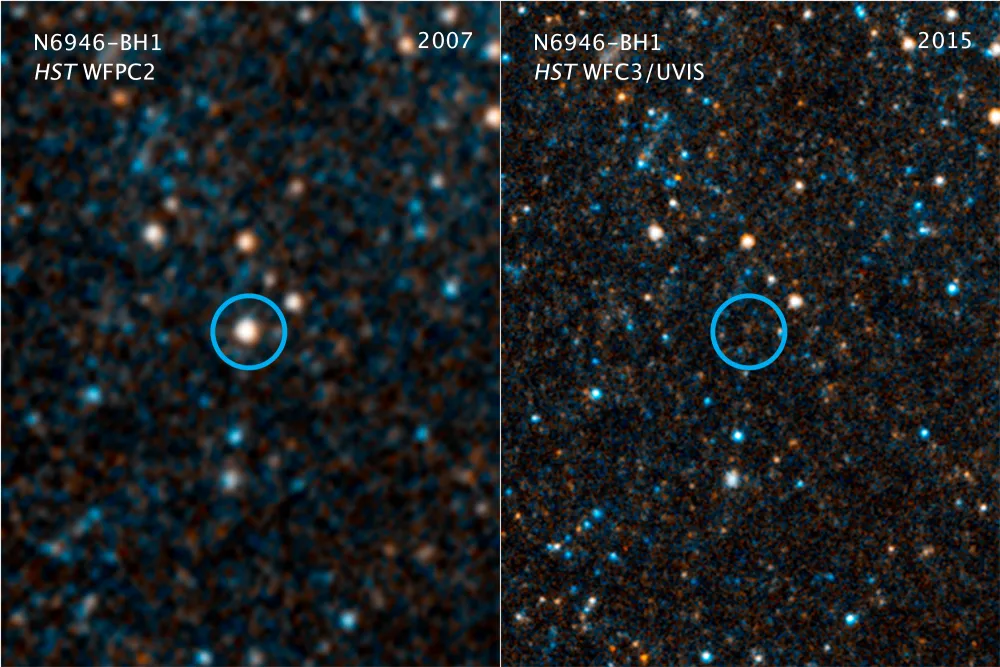
There’s a hint to one possible answer in the star’s name.
Stephen Smartt, of Queen’s University Belfast, suspects that stars heavier than 17 solar masses – in other words most hypergiants – are so massive that they directly collapse into a black hole (hence BH) without going supernova first.
Humphreys points to another option, though.
As hypergiants lose mass they could shrink down, heat up and evolve back into warmer stars.
Paradoxically, such a star wouldn’t be as bright, because although it is hotter, its surface area has been reduced.
That could explain why N6946-BH1 faded from view without going supernova.
It’s still there, just dimmer and so no longer visible to us from NGC 6946’s distance of 25 million lightyears away.
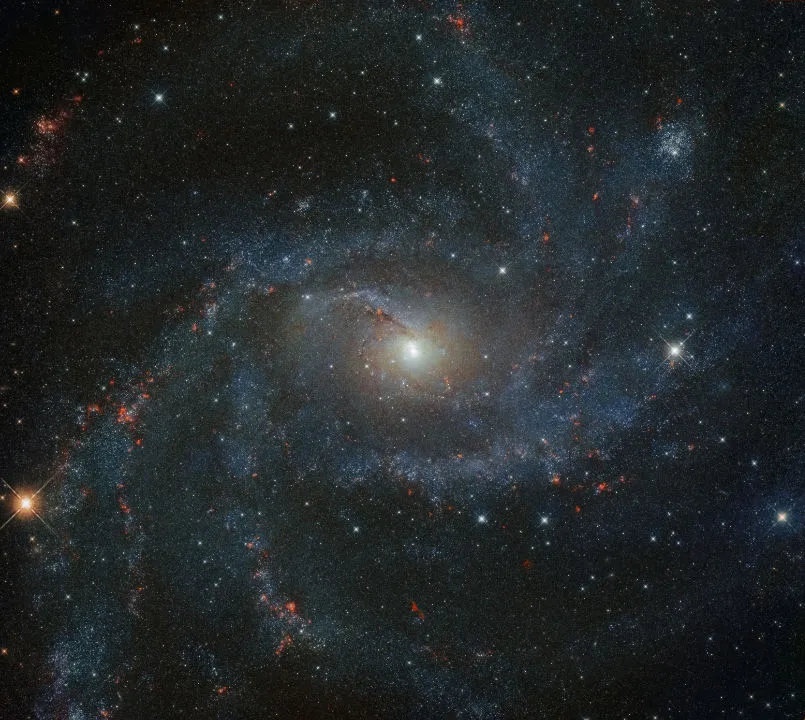
Astronomers could know one way or the other soon. There’s another hypergiant star that might just be gearing up for a similar feat.
Except this one is in our own Galaxy, giving astronomers a much better chance to see what’s going on. It’s called Rho Cassiopeiae (or Rho Cas for short).
In June 2022, Grigoris Maravelias, from the National Observatory of Athens, published details of its ejected material.
Astronomers have seen Rho Cas experience four major outbursts in the last century, most recently in 2013.
Maravelias analysed these episodes and concluded that the outbursts are getting shorter and more frequent.
"This activity indicates that Rho Cas may be preparing to pass to the next evolutionary phase," he writes in the paper outlining his findings.
Again, Humphreys is cautious about getting carried away.
She points out that there aren’t substantial amounts of dust around Rho Cas.
"The lack of dust and ejecta could mean the star still has a long way to go," she says.
What will ultimately happen to Rho Cas remains unclear, but it could hold the key to getting under the hood of hypergiants.
Astronomers will continue to watch with keen interest, as they look to add the final pieces to the enduring puzzle of understanding the Universe’s biggest stars.
This article originally appeared in the May 2023 issue of BBC Sky at Night Magazine.
